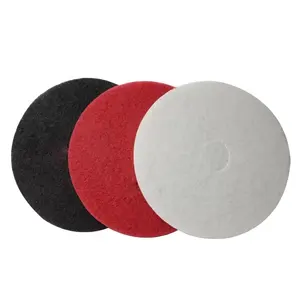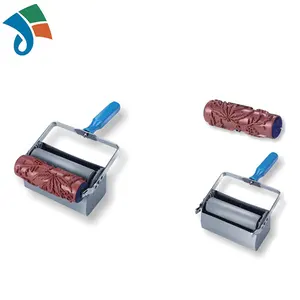Popular in your industry

























































Related Searches:










































































































































Top categories
About tool for cutting holes in wood
Introduction
Woodworking is an art that requires precision, patience, and the right tools. One of the most common tasks in this craft is cutting holes in wood, a seemingly simple task that, in reality, requires a deep understanding of tools, techniques, and safety measures. This comprehensive guide will take you through the journey of woodworking, from understanding the basics of the craft to the specifics of cutting holes in wood. We will delve into the types of holes, their purpose, and the essential tools required. We will also discuss how to choose the right tool for the job, safety measures, and best practices, as well as the maintenance and care of these tools.
Understanding Woodworking and Craftsmanship
Woodworking is an ancient craft that involves creating functional or decorative items from wood. It encompasses techniques like wood carving, joinery, and woodturning. Wood was one of the first materials used by early humans for tools and utensils, and its use is closely tied to the development of modern human life. As civilization has advanced, so has woodworking, with modern technology being used to create more advanced projects. The fundamentals of woodworking remain largely unchanged, making it a skill that can be learned and mastered over time.
Types of Holes in Woodworking
Woodworking involves creating various types of holes, each requiring a specific tool. The type of hole needed significantly affects the choice of tool. For instance, a twist drill bit is commonly used for general purposes, while a brad point bit is ideal for precise hole positioning. Spade bits are used for boring larger diameter holes, and auger bits are designed for quick drilling. Self-feeding bits are perfect for creating larger holes, and installer bits are ideal for installation work. Countersink bits drill a pilot hole and countersink the hole simultaneously, while Forstner bits are used for creating flat-bottomed holes or boring through wood. Lastly, a hole saw is used for removing a plug from the wood, allowing conduit or wires to pass through.
Common Shapes and Sizes
In woodworking, holes can take on various shapes and sizes, often dictated by the project's requirements. The common assumption is that holes are cylindrical, but numerous techniques can create different shapes, including square, rectangular, stepped, oval, and tapered. The size and depth of the hole also vary, depending on the application. These holes are created using various tools and techniques, such as drilling, boring, reaming, and more. The diversity in hole shapes and sizes enhances the functionality and aesthetics of the finished woodwork.
Purpose and Application
In woodworking, creating precise holes is crucial for the assembly and functionality of furniture. Two main types of holes are used: blind holes, which do not penetrate the entire thickness of the panel, and through holes, which do. Blind holes are typically used for fixing furniture doors, creating slots for plugs or dowels, and assembling various components of a structure. Through holes, on the other hand, can be used for technical purposes like allowing cables to pass through, or for aesthetic reasons. The shape and size of the hole depend on its intended function.
Essential Tools for Cutting Holes in Wood
Drill bits and hole saws are essential tools for cutting holes in wood. Drill bits, entering the workpiece axially, cut through-holes or blind holes with a diameter equal to the tool’s. They come in a variety of shapes and materials, suitable for any application. Hole saws, on the other hand, are used to cut perfectly round holes in materials including wood. They can cut larger diameters than standard drill bits and are efficient as they only need to cut the hole perimeter.
Drill Bits
Drill bits are essential tools for cutting holes in wood. They come in various types, each designed for a specific purpose. The twist drill bit, the most common type, is versatile and can be used on various materials. Spade bits are designed for making large holes quickly, while brad point bits are perfect for drilling precise holes. Pilot point bits, a variation of twist bits, bore clean holes efficiently. Auger bits are ideal for drilling deep holes with smooth edges. Forstner bits produce precise, smooth-sided holes with a flat bottom. Each bit type has its unique advantages and applications in woodworking.
Hole Saws
A hole saw is a cylindrical blade that can be mounted onto a drill, allowing holes to be cut accurately into a range of materials. It's often used for cutting holes with a larger diameter than a standard drill bit, providing clean and efficient cuts. The hole saw is attached to a drill via an arbor, designed to connect the hole saw to a drill chuck. Most hole saws can be used with standard handheld drills, but for larger holes, a more powerful drill such as a drill press is recommended.
Spade Bits
Spade bits, also known as paddle bits, are essential tools for cutting holes in wood. They come in various sizes, from 1/4 inch to 1-1/2 inch, and lengths, from 4 inches to 16 inches. High-speed steel and high carbon steel spade bits are known for their durability and efficiency. Some spade bits feature a self-feeding design, which makes drilling easier and faster. They are ideal for woodworking tasks that require clean, precise holes. Sets of spade bits are also available, providing a range of sizes for different applications.
Forstner Bits
Forstner Bits are renowned for their ability to drill clean, chip-free holes in wood. These bits are made from high-quality tool steel and are precision machined for optimal performance. They come in various sizes, from 1/4" to 1-3/4", catering to different woodworking needs. Their large gullets provide exceptional chip clearance, making them ideal for drilling pocket-holes, flat-bottom holes, and more. They can be used with any 3/8” or larger portable drill or stationary drill press, offering versatility in application.
Choosing the Right Tool for the Job
Choosing the right tool for cutting holes in wood depends on the task at hand. A cordless drill/driver is a must-have for boring holes and setting screws. For precision, a drill press can make accurate and easily replicated holes. A hand (manual) drill offers precision and control for delicate work. When boring holes, the drill is only part of the equation. Many woodworkers amass a collection of hole saws, spade bits, step bits, Forstners and other specialty bits. Rather than spending money on a wide assortment all at once, it’s usually best to pick these up as needed.
Considerations Based on Wood Type
When cutting holes in wood, the type of hole saw you need is crucial. Bi-metal hole saws, made of a combination of steel and high-speed steel, are suitable for this task. They are less expensive but not as durable as tungsten carbide hole saws. The size of the hole saw should match the diameter of the hole you need to cut. The number of teeth on a hole saw also affects the quality of the cut, with more teeth providing a smoother finish.
Considerations Based on Hole Size and Shape
When planning a holemaking operation, consider the hole diameter and depth. Drilling and drill bits are commonly used for producing machined holes. Reamers are perfect for slightly enlarging existing holes, providing a smooth internal finish and accurate hole diameter. Hole cutters, or hole saws, can cut larger diameters and are efficient as they only need to cut the hole perimeter. Countersinks and chamfers create a conical hole, allowing screws and bolts to sit flush with a workpiece.
Safety Measures and Best Practices
Woodworking tools, especially those for cutting holes in wood, can be dangerous if not used properly. It's crucial to understand and follow safety procedures when using these machines. Avoid practices that may put you at risk. Remember, although every effort is made to ensure the accuracy of safety information, it's your responsibility to use the tools safely and wisely. Always prioritize your safety when working with woodworking machines.
Personal Protective Equipment (PPE)
When working with tools for cutting holes in wood, personal protective equipment (PPE) is essential. Safety goggles or glasses protect your eyes from dust and debris. Sound protection like earplugs and earmuffs prevent hearing damage from loud power tools. Dust masks or respirators limit dust irritation, while cut-resistant gloves protect your hands from splinters and cuts. Steel toe boots shield your feet from falling objects, and a leather apron prevents power tools from catching your clothing. Lastly, a push stick keeps your hands safe from spinning blades.
Safe Use of Tools
Woodworking, especially when cutting holes in wood, demands your full attention. Power tools like drills and saws require careful handling. A momentary distraction can lead to injury or damage. Always focus on the task at hand and avoid distractions. It's also crucial to disconnect power tools when not in use to prevent accidents. Using sharp blades and bits is essential for cleaner, more precise cuts. Before cutting, always check the wood for old nails, screws, or stray metal to prevent injuries and tool damage.
Maintenance and Care of Tools
Maintaining your woodworking tools, especially those used for cutting holes in wood, is crucial for their longevity and your safety. Regular cleaning is essential to prevent build-up of wood residue that can affect performance. Storing tools properly, in a dry and secure place, can prevent damage and rust. Sharpening bits regularly ensures clean and precise cuts. Replacing bits when they become worn or damaged is also important. Remember, the day you stop caring for your tools is the day they'll stop being able to do their job effectively.
Cleaning and Storing Tools
Maintaining your woodworking tools is crucial for their longevity and effectiveness. Tools with carbon steel parts, like chisels and saws, can rust or get dented, reducing their efficiency. Proper storage is the first line of defense against rust and damage. Keep your tools in a dry location with sufficient spacing, and use tool sheaths if provided. Regular oiling and waxing can also help prevent rust. Additionally, careful and appropriate use of tools can slow down wear and tear, extending their lifespan.
Sharpening and Replacing Bits
Drill bits, essential for cutting holes in wood, can be reused by sharpening them, reducing waste and providing a cost-effective alternative to replacements. Steel drill bits, in particular, can be sharpened to extend their lifespan and maintain sharp edges. This process involves using a bench grinder to grind down the two cutting surfaces on either side of the center axis. Regular sharpening helps ensure your drill bits remain effective and efficient, contributing to the overall maintenance and care of your woodworking tools.
Conclusion
Cutting holes in wood is a fundamental aspect of woodworking that requires a comprehensive understanding of tools, techniques, and safety measures. From the simple twist drill bit to the more complex Forstner bit, each tool has its unique advantages and applications. Choosing the right tool based on the wood type, hole size, and shape is crucial for achieving the desired results. Equally important is the adherence to safety measures and the proper maintenance of these tools. By understanding these aspects, you can unlock your craftsmanship and create functional and aesthetically pleasing woodwork. Remember, the key to mastering this craft lies in continuous learning and practice.
































































